Notice: Undefined index: autolink_title_attribute_when_using_custom_url in /home/racingonline/public_html/wp-content/plugins/taxopress-pro/inc/class.client.autolinks.php on line 501
Notice: Undefined index: autolink_title_attribute_when_using_custom_url in /home/racingonline/public_html/wp-content/plugins/taxopress-pro/inc/class.client.autolinks.php on line 501
Notice: Undefined index: autolink_title_attribute_when_using_custom_url in /home/racingonline/public_html/wp-content/plugins/taxopress-pro/inc/class.client.autolinks.php on line 501
Notice: Undefined index: autolink_title_attribute_when_using_custom_url in /home/racingonline/public_html/wp-content/plugins/taxopress-pro/inc/class.client.autolinks.php on line 501
Notice: Undefined index: autolink_title_attribute_when_using_custom_url in /home/racingonline/public_html/wp-content/plugins/taxopress-pro/inc/class.client.autolinks.php on line 501
Notice: Undefined index: autolink_title_attribute_when_using_custom_url in /home/racingonline/public_html/wp-content/plugins/taxopress-pro/inc/class.client.autolinks.php on line 501
Notice: Undefined index: autolink_title_attribute_when_using_custom_url in /home/racingonline/public_html/wp-content/plugins/taxopress-pro/inc/class.client.autolinks.php on line 501
Notice: Undefined index: autolink_title_attribute_when_using_custom_url in /home/racingonline/public_html/wp-content/plugins/taxopress-pro/inc/class.client.autolinks.php on line 501
Notice: Undefined index: autolink_title_attribute_when_using_custom_url in /home/racingonline/public_html/wp-content/plugins/taxopress-pro/inc/class.client.autolinks.php on line 501
Notice: Undefined index: autolink_title_attribute_when_using_custom_url in /home/racingonline/public_html/wp-content/plugins/taxopress-pro/inc/class.client.autolinks.php on line 501
Notice: Undefined index: autolink_title_attribute_when_using_custom_url in /home/racingonline/public_html/wp-content/plugins/taxopress-pro/inc/class.client.autolinks.php on line 501
Notice: Undefined index: autolink_title_attribute_when_using_custom_url in /home/racingonline/public_html/wp-content/plugins/taxopress-pro/inc/class.client.autolinks.php on line 501
Notice: Undefined index: autolink_title_attribute_when_using_custom_url in /home/racingonline/public_html/wp-content/plugins/taxopress-pro/inc/class.client.autolinks.php on line 501
Notice: Undefined index: autolink_title_attribute_when_using_custom_url in /home/racingonline/public_html/wp-content/plugins/taxopress-pro/inc/class.client.autolinks.php on line 501
Notice: Undefined index: autolink_title_attribute_when_using_custom_url in /home/racingonline/public_html/wp-content/plugins/taxopress-pro/inc/class.client.autolinks.php on line 501
Notice: Undefined index: autolink_title_attribute_when_using_custom_url in /home/racingonline/public_html/wp-content/plugins/taxopress-pro/inc/class.client.autolinks.php on line 501
Notice: Undefined index: autolink_title_attribute_when_using_custom_url in /home/racingonline/public_html/wp-content/plugins/taxopress-pro/inc/class.client.autolinks.php on line 501
Notice: Undefined index: autolink_title_attribute_when_using_custom_url in /home/racingonline/public_html/wp-content/plugins/taxopress-pro/inc/class.client.autolinks.php on line 501
Notice: Undefined index: autolink_title_attribute_when_using_custom_url in /home/racingonline/public_html/wp-content/plugins/taxopress-pro/inc/class.client.autolinks.php on line 501
Notice: Undefined index: autolink_title_attribute_when_using_custom_url in /home/racingonline/public_html/wp-content/plugins/taxopress-pro/inc/class.client.autolinks.php on line 501
Notice: Undefined index: autolink_title_attribute_when_using_custom_url in /home/racingonline/public_html/wp-content/plugins/taxopress-pro/inc/class.client.autolinks.php on line 501
Notice: Undefined index: autolink_title_attribute_when_using_custom_url in /home/racingonline/public_html/wp-content/plugins/taxopress-pro/inc/class.client.autolinks.php on line 501
Notice: Undefined index: autolink_title_attribute_when_using_custom_url in /home/racingonline/public_html/wp-content/plugins/taxopress-pro/inc/class.client.autolinks.php on line 501
Notice: Undefined index: autolink_title_attribute_when_using_custom_url in /home/racingonline/public_html/wp-content/plugins/taxopress-pro/inc/class.client.autolinks.php on line 501
Notice: Undefined index: autolink_title_attribute_when_using_custom_url in /home/racingonline/public_html/wp-content/plugins/taxopress-pro/inc/class.client.autolinks.php on line 501
Notice: Undefined index: autolink_title_attribute_when_using_custom_url in /home/racingonline/public_html/wp-content/plugins/taxopress-pro/inc/class.client.autolinks.php on line 501
Notice: Undefined index: autolink_title_attribute_when_using_custom_url in /home/racingonline/public_html/wp-content/plugins/taxopress-pro/inc/class.client.autolinks.php on line 501
Notice: Undefined index: autolink_title_attribute_when_using_custom_url in /home/racingonline/public_html/wp-content/plugins/taxopress-pro/inc/class.client.autolinks.php on line 501
Notice: Undefined index: autolink_title_attribute_when_using_custom_url in /home/racingonline/public_html/wp-content/plugins/taxopress-pro/inc/class.client.autolinks.php on line 501
Notice: Undefined index: autolink_title_attribute_when_using_custom_url in /home/racingonline/public_html/wp-content/plugins/taxopress-pro/inc/class.client.autolinks.php on line 501
Notice: Undefined index: autolink_title_attribute_when_using_custom_url in /home/racingonline/public_html/wp-content/plugins/taxopress-pro/inc/class.client.autolinks.php on line 501
Notice: Undefined index: autolink_title_attribute_when_using_custom_url in /home/racingonline/public_html/wp-content/plugins/taxopress-pro/inc/class.client.autolinks.php on line 501
Notice: Undefined index: autolink_title_attribute_when_using_custom_url in /home/racingonline/public_html/wp-content/plugins/taxopress-pro/inc/class.client.autolinks.php on line 501
Notice: Undefined index: autolink_title_attribute_when_using_custom_url in /home/racingonline/public_html/wp-content/plugins/taxopress-pro/inc/class.client.autolinks.php on line 501
Notice: Undefined index: autolink_title_attribute_when_using_custom_url in /home/racingonline/public_html/wp-content/plugins/taxopress-pro/inc/class.client.autolinks.php on line 501
Notice: Undefined index: autolink_title_attribute_when_using_custom_url in /home/racingonline/public_html/wp-content/plugins/taxopress-pro/inc/class.client.autolinks.php on line 501
Notice: Undefined index: autolink_title_attribute_when_using_custom_url in /home/racingonline/public_html/wp-content/plugins/taxopress-pro/inc/class.client.autolinks.php on line 501
Notice: Undefined index: autolink_title_attribute_when_using_custom_url in /home/racingonline/public_html/wp-content/plugins/taxopress-pro/inc/class.client.autolinks.php on line 501
Notice: Undefined index: autolink_title_attribute_when_using_custom_url in /home/racingonline/public_html/wp-content/plugins/taxopress-pro/inc/class.client.autolinks.php on line 501
Notice: Undefined index: autolink_title_attribute_when_using_custom_url in /home/racingonline/public_html/wp-content/plugins/taxopress-pro/inc/class.client.autolinks.php on line 501
Notice: Undefined index: autolink_title_attribute_when_using_custom_url in /home/racingonline/public_html/wp-content/plugins/taxopress-pro/inc/class.client.autolinks.php on line 501
Notice: Undefined index: autolink_title_attribute_when_using_custom_url in /home/racingonline/public_html/wp-content/plugins/taxopress-pro/inc/class.client.autolinks.php on line 501
Notice: Undefined index: autolink_title_attribute_when_using_custom_url in /home/racingonline/public_html/wp-content/plugins/taxopress-pro/inc/class.client.autolinks.php on line 501
Notice: Undefined index: autolink_title_attribute_when_using_custom_url in /home/racingonline/public_html/wp-content/plugins/taxopress-pro/inc/class.client.autolinks.php on line 501
Notice: Undefined index: autolink_title_attribute_when_using_custom_url in /home/racingonline/public_html/wp-content/plugins/taxopress-pro/inc/class.client.autolinks.php on line 501
Notice: Undefined index: autolink_title_attribute_when_using_custom_url in /home/racingonline/public_html/wp-content/plugins/taxopress-pro/inc/class.client.autolinks.php on line 501
Notice: Undefined index: autolink_title_attribute_when_using_custom_url in /home/racingonline/public_html/wp-content/plugins/taxopress-pro/inc/class.client.autolinks.php on line 501
Notice: Undefined index: autolink_title_attribute_when_using_custom_url in /home/racingonline/public_html/wp-content/plugins/taxopress-pro/inc/class.client.autolinks.php on line 501
Notice: Undefined index: autolink_title_attribute_when_using_custom_url in /home/racingonline/public_html/wp-content/plugins/taxopress-pro/inc/class.client.autolinks.php on line 501
Notice: Undefined index: autolink_title_attribute_when_using_custom_url in /home/racingonline/public_html/wp-content/plugins/taxopress-pro/inc/class.client.autolinks.php on line 501
Notice: Undefined index: autolink_title_attribute_when_using_custom_url in /home/racingonline/public_html/wp-content/plugins/taxopress-pro/inc/class.client.autolinks.php on line 501
Notice: Undefined index: autolink_title_attribute_when_using_custom_url in /home/racingonline/public_html/wp-content/plugins/taxopress-pro/inc/class.client.autolinks.php on line 501
Notice: Undefined index: autolink_title_attribute_when_using_custom_url in /home/racingonline/public_html/wp-content/plugins/taxopress-pro/inc/class.client.autolinks.php on line 501
Notice: Undefined index: autolink_title_attribute_when_using_custom_url in /home/racingonline/public_html/wp-content/plugins/taxopress-pro/inc/class.client.autolinks.php on line 501
Notice: Undefined index: autolink_title_attribute_when_using_custom_url in /home/racingonline/public_html/wp-content/plugins/taxopress-pro/inc/class.client.autolinks.php on line 501
Notice: Undefined index: autolink_title_attribute_when_using_custom_url in /home/racingonline/public_html/wp-content/plugins/taxopress-pro/inc/class.client.autolinks.php on line 501
Notice: Undefined index: autolink_title_attribute_when_using_custom_url in /home/racingonline/public_html/wp-content/plugins/taxopress-pro/inc/class.client.autolinks.php on line 501
Notice: Undefined index: autolink_title_attribute_when_using_custom_url in /home/racingonline/public_html/wp-content/plugins/taxopress-pro/inc/class.client.autolinks.php on line 501
Notice: Undefined index: autolink_title_attribute_when_using_custom_url in /home/racingonline/public_html/wp-content/plugins/taxopress-pro/inc/class.client.autolinks.php on line 501
Notice: Undefined index: autolink_title_attribute_when_using_custom_url in /home/racingonline/public_html/wp-content/plugins/taxopress-pro/inc/class.client.autolinks.php on line 501
Notice: Undefined index: autolink_title_attribute_when_using_custom_url in /home/racingonline/public_html/wp-content/plugins/taxopress-pro/inc/class.client.autolinks.php on line 501
Notice: Undefined index: autolink_title_attribute_when_using_custom_url in /home/racingonline/public_html/wp-content/plugins/taxopress-pro/inc/class.client.autolinks.php on line 501
Notice: Undefined index: autolink_title_attribute_when_using_custom_url in /home/racingonline/public_html/wp-content/plugins/taxopress-pro/inc/class.client.autolinks.php on line 501
Notice: Undefined index: autolink_title_attribute_when_using_custom_url in /home/racingonline/public_html/wp-content/plugins/taxopress-pro/inc/class.client.autolinks.php on line 501
Notice: Undefined index: autolink_title_attribute_when_using_custom_url in /home/racingonline/public_html/wp-content/plugins/taxopress-pro/inc/class.client.autolinks.php on line 501
Notice: Undefined index: autolink_title_attribute_when_using_custom_url in /home/racingonline/public_html/wp-content/plugins/taxopress-pro/inc/class.client.autolinks.php on line 501
Notice: Undefined index: autolink_title_attribute_when_using_custom_url in /home/racingonline/public_html/wp-content/plugins/taxopress-pro/inc/class.client.autolinks.php on line 501
Notice: Undefined index: autolink_title_attribute_when_using_custom_url in /home/racingonline/public_html/wp-content/plugins/taxopress-pro/inc/class.client.autolinks.php on line 501
Notice: Undefined index: autolink_title_attribute_when_using_custom_url in /home/racingonline/public_html/wp-content/plugins/taxopress-pro/inc/class.client.autolinks.php on line 501
Notice: Undefined index: autolink_title_attribute_when_using_custom_url in /home/racingonline/public_html/wp-content/plugins/taxopress-pro/inc/class.client.autolinks.php on line 501
Notice: Undefined index: autolink_title_attribute_when_using_custom_url in /home/racingonline/public_html/wp-content/plugins/taxopress-pro/inc/class.client.autolinks.php on line 501
Notice: Undefined index: autolink_title_attribute_when_using_custom_url in /home/racingonline/public_html/wp-content/plugins/taxopress-pro/inc/class.client.autolinks.php on line 501
Notice: Undefined index: autolink_title_attribute_when_using_custom_url in /home/racingonline/public_html/wp-content/plugins/taxopress-pro/inc/class.client.autolinks.php on line 501
Notice: Undefined index: autolink_title_attribute_when_using_custom_url in /home/racingonline/public_html/wp-content/plugins/taxopress-pro/inc/class.client.autolinks.php on line 501
Notice: Undefined index: autolink_title_attribute_when_using_custom_url in /home/racingonline/public_html/wp-content/plugins/taxopress-pro/inc/class.client.autolinks.php on line 501
Notice: Undefined index: autolink_title_attribute_when_using_custom_url in /home/racingonline/public_html/wp-content/plugins/taxopress-pro/inc/class.client.autolinks.php on line 501
Notice: Undefined index: autolink_title_attribute_when_using_custom_url in /home/racingonline/public_html/wp-content/plugins/taxopress-pro/inc/class.client.autolinks.php on line 501
Notice: Undefined index: autolink_title_attribute_when_using_custom_url in /home/racingonline/public_html/wp-content/plugins/taxopress-pro/inc/class.client.autolinks.php on line 501
Notice: Undefined index: autolink_title_attribute_when_using_custom_url in /home/racingonline/public_html/wp-content/plugins/taxopress-pro/inc/class.client.autolinks.php on line 501
Notice: Undefined index: autolink_title_attribute_when_using_custom_url in /home/racingonline/public_html/wp-content/plugins/taxopress-pro/inc/class.client.autolinks.php on line 501
Notice: Undefined index: autolink_title_attribute_when_using_custom_url in /home/racingonline/public_html/wp-content/plugins/taxopress-pro/inc/class.client.autolinks.php on line 501
Notice: Undefined index: autolink_title_attribute_when_using_custom_url in /home/racingonline/public_html/wp-content/plugins/taxopress-pro/inc/class.client.autolinks.php on line 501
Notice: Undefined index: autolink_title_attribute_when_using_custom_url in /home/racingonline/public_html/wp-content/plugins/taxopress-pro/inc/class.client.autolinks.php on line 501
Notice: Undefined index: autolink_title_attribute_when_using_custom_url in /home/racingonline/public_html/wp-content/plugins/taxopress-pro/inc/class.client.autolinks.php on line 501
Notice: Undefined index: autolink_title_attribute_when_using_custom_url in /home/racingonline/public_html/wp-content/plugins/taxopress-pro/inc/class.client.autolinks.php on line 501
Notice: Undefined index: autolink_title_attribute_when_using_custom_url in /home/racingonline/public_html/wp-content/plugins/taxopress-pro/inc/class.client.autolinks.php on line 501
Notice: Undefined index: autolink_title_attribute_when_using_custom_url in /home/racingonline/public_html/wp-content/plugins/taxopress-pro/inc/class.client.autolinks.php on line 501
Notice: Undefined index: autolink_title_attribute_when_using_custom_url in /home/racingonline/public_html/wp-content/plugins/taxopress-pro/inc/class.client.autolinks.php on line 501
Notice: Undefined index: autolink_title_attribute_when_using_custom_url in /home/racingonline/public_html/wp-content/plugins/taxopress-pro/inc/class.client.autolinks.php on line 501
Notice: Undefined index: autolink_title_attribute_when_using_custom_url in /home/racingonline/public_html/wp-content/plugins/taxopress-pro/inc/class.client.autolinks.php on line 501
Notice: Undefined index: autolink_title_attribute_when_using_custom_url in /home/racingonline/public_html/wp-content/plugins/taxopress-pro/inc/class.client.autolinks.php on line 501
Notice: Undefined index: autolink_title_attribute_when_using_custom_url in /home/racingonline/public_html/wp-content/plugins/taxopress-pro/inc/class.client.autolinks.php on line 501
Notice: Undefined index: autolink_title_attribute_when_using_custom_url in /home/racingonline/public_html/wp-content/plugins/taxopress-pro/inc/class.client.autolinks.php on line 501
Notice: Undefined index: autolink_title_attribute_when_using_custom_url in /home/racingonline/public_html/wp-content/plugins/taxopress-pro/inc/class.client.autolinks.php on line 501
Notice: Undefined index: autolink_title_attribute_when_using_custom_url in /home/racingonline/public_html/wp-content/plugins/taxopress-pro/inc/class.client.autolinks.php on line 501
Notice: Undefined index: autolink_title_attribute_when_using_custom_url in /home/racingonline/public_html/wp-content/plugins/taxopress-pro/inc/class.client.autolinks.php on line 501
Notice: Undefined index: autolink_title_attribute_when_using_custom_url in /home/racingonline/public_html/wp-content/plugins/taxopress-pro/inc/class.client.autolinks.php on line 501
Notice: Undefined index: autolink_title_attribute_when_using_custom_url in /home/racingonline/public_html/wp-content/plugins/taxopress-pro/inc/class.client.autolinks.php on line 501
Notice: Undefined index: autolink_title_attribute_when_using_custom_url in /home/racingonline/public_html/wp-content/plugins/taxopress-pro/inc/class.client.autolinks.php on line 501
Notice: Undefined index: autolink_title_attribute_when_using_custom_url in /home/racingonline/public_html/wp-content/plugins/taxopress-pro/inc/class.client.autolinks.php on line 501
Notice: Undefined index: autolink_title_attribute_when_using_custom_url in /home/racingonline/public_html/wp-content/plugins/taxopress-pro/inc/class.client.autolinks.php on line 501
Notice: Undefined index: autolink_title_attribute_when_using_custom_url in /home/racingonline/public_html/wp-content/plugins/taxopress-pro/inc/class.client.autolinks.php on line 501
Notice: Undefined index: autolink_title_attribute_when_using_custom_url in /home/racingonline/public_html/wp-content/plugins/taxopress-pro/inc/class.client.autolinks.php on line 501
Notice: Undefined index: autolink_title_attribute_when_using_custom_url in /home/racingonline/public_html/wp-content/plugins/taxopress-pro/inc/class.client.autolinks.php on line 501
Notice: Undefined index: autolink_title_attribute_when_using_custom_url in /home/racingonline/public_html/wp-content/plugins/taxopress-pro/inc/class.client.autolinks.php on line 501
Notice: Undefined index: autolink_title_attribute_when_using_custom_url in /home/racingonline/public_html/wp-content/plugins/taxopress-pro/inc/class.client.autolinks.php on line 501
Notice: Undefined index: autolink_title_attribute_when_using_custom_url in /home/racingonline/public_html/wp-content/plugins/taxopress-pro/inc/class.client.autolinks.php on line 501
Notice: Undefined index: autolink_title_attribute_when_using_custom_url in /home/racingonline/public_html/wp-content/plugins/taxopress-pro/inc/class.client.autolinks.php on line 501
Notice: Undefined index: autolink_title_attribute_when_using_custom_url in /home/racingonline/public_html/wp-content/plugins/taxopress-pro/inc/class.client.autolinks.php on line 501
Notice: Undefined index: autolink_title_attribute_when_using_custom_url in /home/racingonline/public_html/wp-content/plugins/taxopress-pro/inc/class.client.autolinks.php on line 501
Notice: Undefined index: autolink_title_attribute_when_using_custom_url in /home/racingonline/public_html/wp-content/plugins/taxopress-pro/inc/class.client.autolinks.php on line 501
Notice: Undefined index: autolink_title_attribute_when_using_custom_url in /home/racingonline/public_html/wp-content/plugins/taxopress-pro/inc/class.client.autolinks.php on line 501
Notice: Undefined index: autolink_title_attribute_when_using_custom_url in /home/racingonline/public_html/wp-content/plugins/taxopress-pro/inc/class.client.autolinks.php on line 501
Notice: Undefined index: autolink_title_attribute_when_using_custom_url in /home/racingonline/public_html/wp-content/plugins/taxopress-pro/inc/class.client.autolinks.php on line 501
Notice: Undefined index: autolink_title_attribute_when_using_custom_url in /home/racingonline/public_html/wp-content/plugins/taxopress-pro/inc/class.client.autolinks.php on line 501
Notice: Undefined index: autolink_title_attribute_when_using_custom_url in /home/racingonline/public_html/wp-content/plugins/taxopress-pro/inc/class.client.autolinks.php on line 501
Notice: Undefined index: autolink_title_attribute_when_using_custom_url in /home/racingonline/public_html/wp-content/plugins/taxopress-pro/inc/class.client.autolinks.php on line 501
Notice: Undefined index: autolink_title_attribute_when_using_custom_url in /home/racingonline/public_html/wp-content/plugins/taxopress-pro/inc/class.client.autolinks.php on line 501
Notice: Undefined index: autolink_title_attribute_when_using_custom_url in /home/racingonline/public_html/wp-content/plugins/taxopress-pro/inc/class.client.autolinks.php on line 501
Notice: Undefined index: autolink_title_attribute_when_using_custom_url in /home/racingonline/public_html/wp-content/plugins/taxopress-pro/inc/class.client.autolinks.php on line 501
Notice: Undefined index: autolink_title_attribute_when_using_custom_url in /home/racingonline/public_html/wp-content/plugins/taxopress-pro/inc/class.client.autolinks.php on line 501
Notice: Undefined index: autolink_title_attribute_when_using_custom_url in /home/racingonline/public_html/wp-content/plugins/taxopress-pro/inc/class.client.autolinks.php on line 501
Notice: Undefined index: autolink_title_attribute_when_using_custom_url in /home/racingonline/public_html/wp-content/plugins/taxopress-pro/inc/class.client.autolinks.php on line 501
Notice: Undefined index: autolink_title_attribute_when_using_custom_url in /home/racingonline/public_html/wp-content/plugins/taxopress-pro/inc/class.client.autolinks.php on line 501
Notice: Undefined index: autolink_title_attribute_when_using_custom_url in /home/racingonline/public_html/wp-content/plugins/taxopress-pro/inc/class.client.autolinks.php on line 501
Notice: Undefined index: autolink_title_attribute_when_using_custom_url in /home/racingonline/public_html/wp-content/plugins/taxopress-pro/inc/class.client.autolinks.php on line 501
Notice: Undefined index: autolink_title_attribute_when_using_custom_url in /home/racingonline/public_html/wp-content/plugins/taxopress-pro/inc/class.client.autolinks.php on line 501
Notice: Undefined index: autolink_title_attribute_when_using_custom_url in /home/racingonline/public_html/wp-content/plugins/taxopress-pro/inc/class.client.autolinks.php on line 501
Notice: Undefined index: autolink_title_attribute_when_using_custom_url in /home/racingonline/public_html/wp-content/plugins/taxopress-pro/inc/class.client.autolinks.php on line 501
Notice: Undefined index: autolink_title_attribute_when_using_custom_url in /home/racingonline/public_html/wp-content/plugins/taxopress-pro/inc/class.client.autolinks.php on line 501
Notice: Undefined index: autolink_title_attribute_when_using_custom_url in /home/racingonline/public_html/wp-content/plugins/taxopress-pro/inc/class.client.autolinks.php on line 501
Notice: Undefined index: autolink_title_attribute_when_using_custom_url in /home/racingonline/public_html/wp-content/plugins/taxopress-pro/inc/class.client.autolinks.php on line 501
Notice: Undefined index: autolink_title_attribute_when_using_custom_url in /home/racingonline/public_html/wp-content/plugins/taxopress-pro/inc/class.client.autolinks.php on line 501
Notice: Undefined index: autolink_title_attribute_when_using_custom_url in /home/racingonline/public_html/wp-content/plugins/taxopress-pro/inc/class.client.autolinks.php on line 501
Notice: Undefined index: autolink_title_attribute_when_using_custom_url in /home/racingonline/public_html/wp-content/plugins/taxopress-pro/inc/class.client.autolinks.php on line 501
Notice: Undefined index: autolink_title_attribute_when_using_custom_url in /home/racingonline/public_html/wp-content/plugins/taxopress-pro/inc/class.client.autolinks.php on line 501
Notice: Undefined index: autolink_title_attribute_when_using_custom_url in /home/racingonline/public_html/wp-content/plugins/taxopress-pro/inc/class.client.autolinks.php on line 501
Notice: Undefined index: autolink_title_attribute_when_using_custom_url in /home/racingonline/public_html/wp-content/plugins/taxopress-pro/inc/class.client.autolinks.php on line 501
Notice: Undefined index: autolink_title_attribute_when_using_custom_url in /home/racingonline/public_html/wp-content/plugins/taxopress-pro/inc/class.client.autolinks.php on line 501
Notice: Undefined index: autolink_title_attribute_when_using_custom_url in /home/racingonline/public_html/wp-content/plugins/taxopress-pro/inc/class.client.autolinks.php on line 501
Notice: Undefined index: autolink_title_attribute_when_using_custom_url in /home/racingonline/public_html/wp-content/plugins/taxopress-pro/inc/class.client.autolinks.php on line 501
Notice: Undefined index: autolink_title_attribute_when_using_custom_url in /home/racingonline/public_html/wp-content/plugins/taxopress-pro/inc/class.client.autolinks.php on line 501
Notice: Undefined index: autolink_title_attribute_when_using_custom_url in /home/racingonline/public_html/wp-content/plugins/taxopress-pro/inc/class.client.autolinks.php on line 501
Notice: Undefined index: autolink_title_attribute_when_using_custom_url in /home/racingonline/public_html/wp-content/plugins/taxopress-pro/inc/class.client.autolinks.php on line 501
Notice: Undefined index: autolink_title_attribute_when_using_custom_url in /home/racingonline/public_html/wp-content/plugins/taxopress-pro/inc/class.client.autolinks.php on line 501
John Moore sits at the open window. His elbows rest on the worktop, his hands cup binoculars in a steadying grip and his eyes study a horse galloping head-on towards his elevated position. He lowers the Zeiss glasses, tilting them away casually in his right hand; his left hand takes hold of a stopwatch and clicks. The gelding whisks away to his left, its hooves cutting and flinging clouds of dark dirt as it sweeps around the track’s right-hand curve.
Moore is in his corner on the first floor of the Sha Tin trainers’ stand. It’s been his morning perch since 1985, a prime spot with a direct view up the dirt track’s finishing straight. From this vantage, he has called out countless instructions to work riders; he has watched Beauty Generation’s bullyboy bravado and Able Friend’s amiably belligerent daily pause; and he has held court – when the ‘internationals’ arrive each December, Moore’s corner is ever a hive of visitors, old friends chatting and agents angling.
His work-watching routine doesn’t deviate much: he parks his blue-trimmed white bicycle by the running rail, takes a leather folder from the front basket and unhooks what looks like a black zip-up washbag from the handlebars; he crosses the turf course, ascends the narrow switchback stairs to his familiar berth, opens the little bag and unpacks binoculars, pen and stopwatch.
“It’s the same kit as when I started; the only difference is that I have this phone now, too, but I still use the stopwatch. I might be the only one here who still times them for themselves; I want to know straight away, so I know what they’ve done when I’m looking at them back at the stables,” he says, “I don’t want to have to wait for the Jockey Club times.”
He copies the numbers from the handheld clock’s digital display on to a sheet of paper placed on the left side of the folder.
“He’s a workaholic, he’s a neatness freak,” says Douglas Whyte, the 13-time champion jockey-turned trainer who observed Moore closely before setting up his own stable. “But more than anything,” he adds, “it’s his timing, especially with the big races; he gets a horse on song and gets him to blossom at the right time.”
Moore first clocked horses one morning 52 years ago when, at age 18, his feet took their belated maiden step on to a racecourse. That day set the counter on a span that has taken him to horse racing’s pinnacle; Hong Kong‘s best-known trainer, a seven-time champion, the city’s big-race maestro and the handler of champions, the one with the most wins on the board and stakes money in the bank.
But, on 15 July, his time will run out; rules are rules, and, at age 70, the Hong Kong Jockey Club’s compulsory retirement will take effect and his Hong Kong era will end. Moore, who bridges right back to the months leading into Hong Kong’s professional dawn, will pack up his safari suits, panama hats and ready soundbites, and depart for Rosehill Gardens racecourse in Sydney, not too far from where it all began in an old gypsy caravan at Randwick.
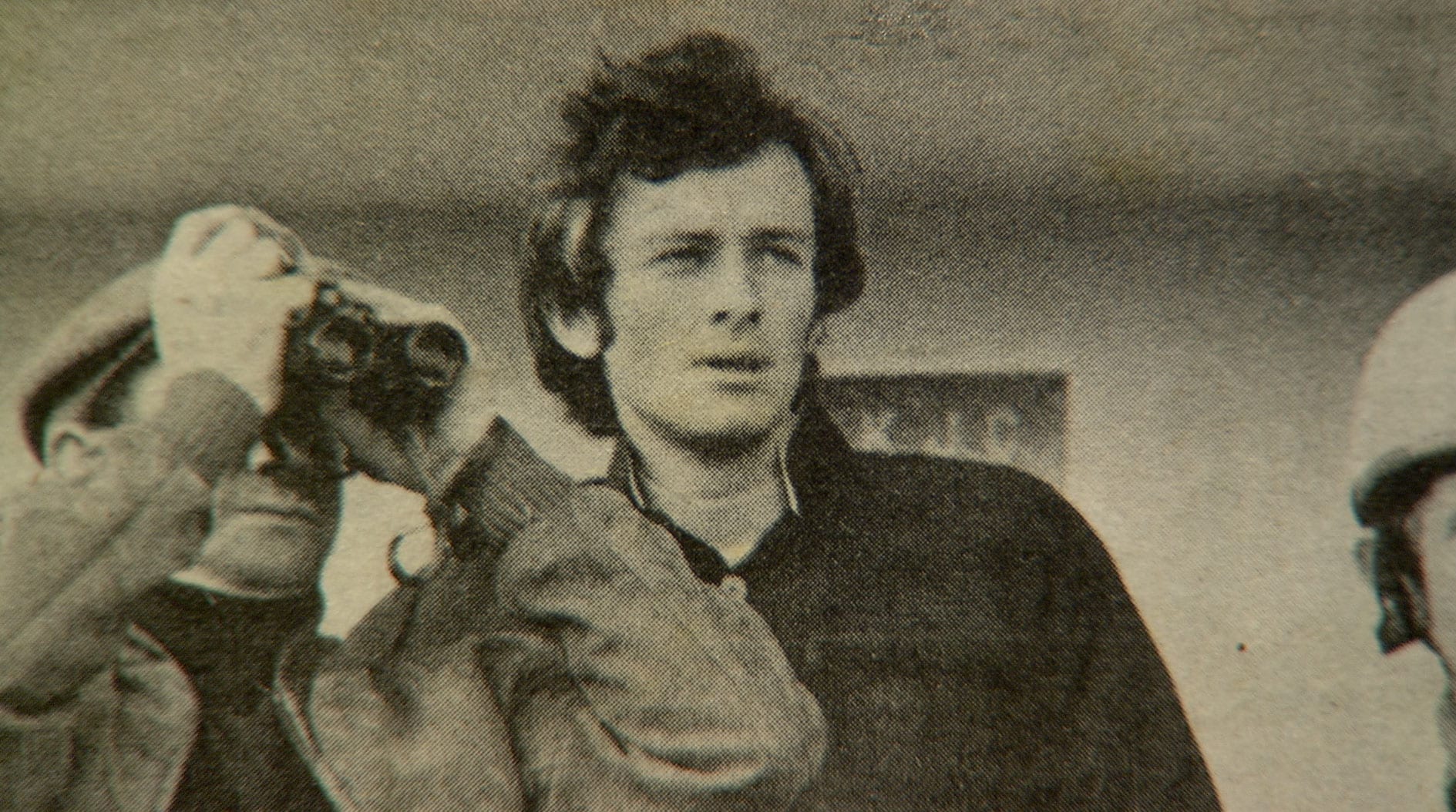
The accidental trainer
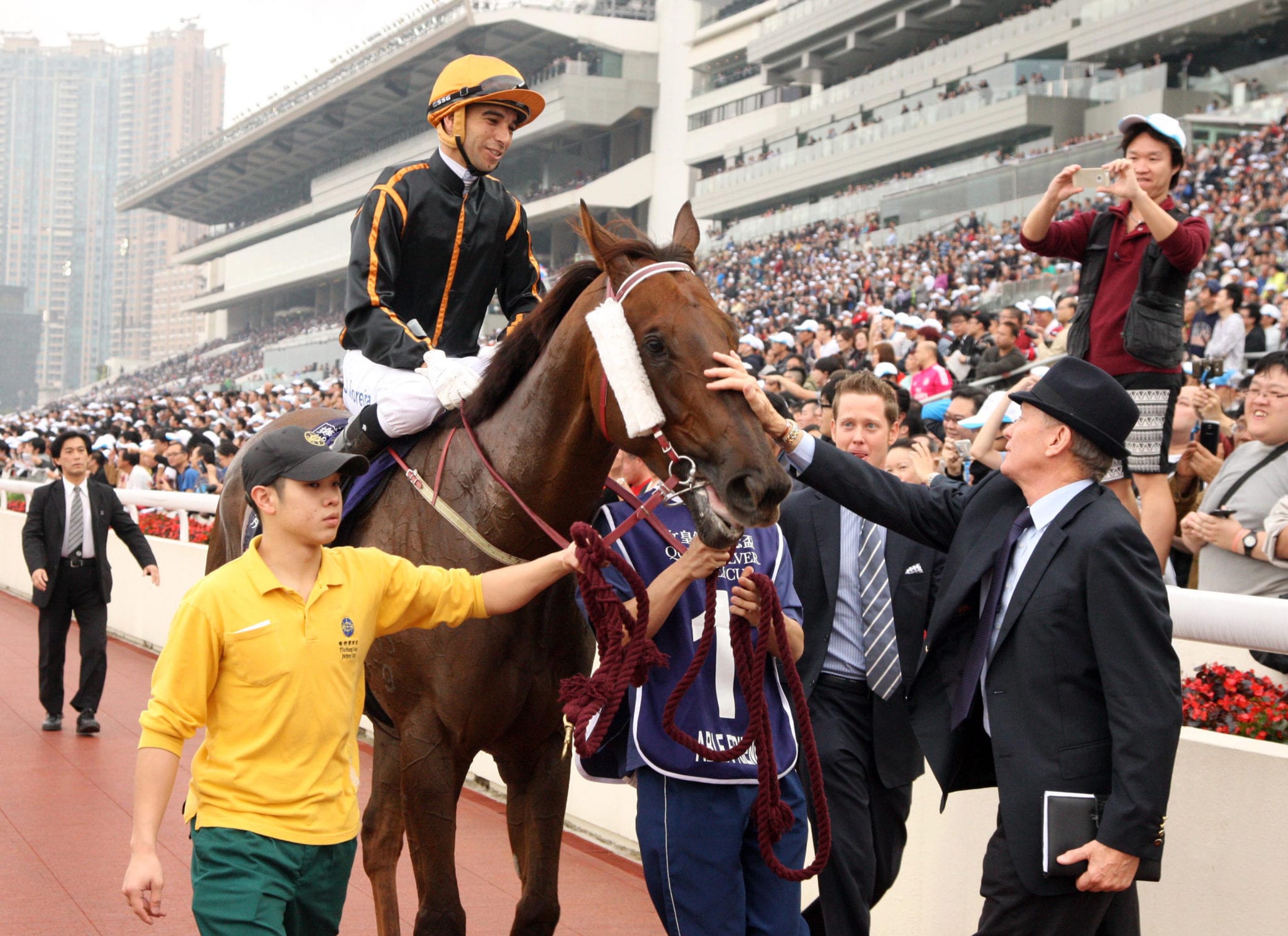 Moore guided Able Friend to world champion status.[/caption]
Moore guided Able Friend to world champion status.[/caption]
Best of the best
It was the morning after the 2014 LONGINES Hong Kong International Races. The winter sun was low but bright, a warming foil to the chill wind that blustered off the Shing Mun River and whipped sand in a skin-stinging dance around the Sha Tin yard.
Crouched in a saddling stall, sheltered behind a wood chip board, Moore and Joao Moreira hunched low on small plastic stools that would have comfortably seated a pair of pre-schoolers, and they laughed.
“We’re up in the stratosphere! We’re still there, we haven’t come down yet,” Moore said, and he beamed like the Cranbrook schoolboy he once was.
“It’s like we’re drunk or something,” Moreira chipped in. “The feeling is something else.”
Trainer and jockey had, the previous afternoon, carried off Hong Kong’s two richest prizes: the street-fighting Designs On Rome had seen off former stablemate Military Attack in a head-bobber to win the LONGINES Hong Kong Cup and Able Friend had taken quickening strides towards greatness with an imperious victory in the LONGINES Hong Kong Mile.
“It’s the biggest result of my career,” Moore asserted as he sat there.
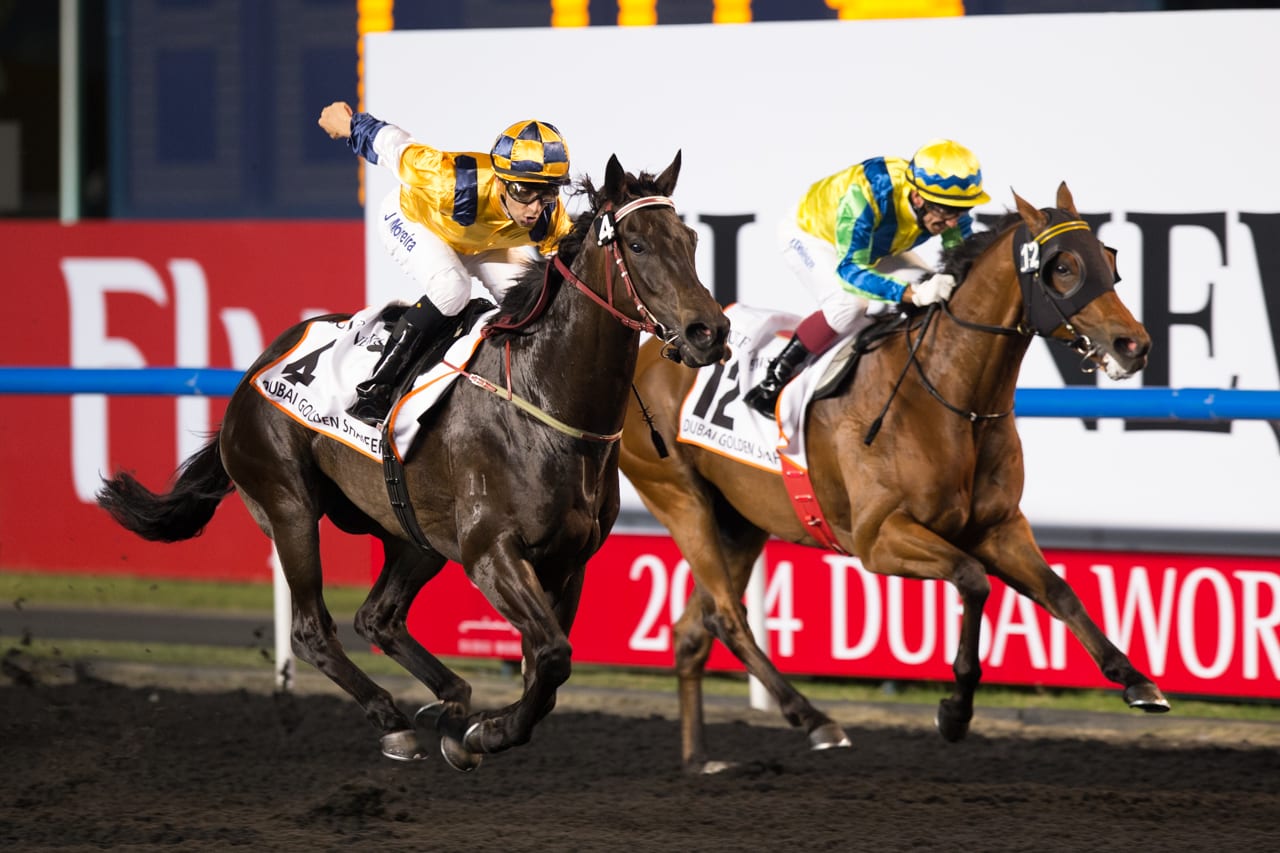
His reputation as a big-occasion trainer was booming; it was nine months after Sterling City gave him a bedazzling success on the globally-significant Dubai World Cup night, but a time before Werther, Rapper Dragon and Beauty Generation came along and added further layers of gilded gloss.
Now, more than five and a half years on, the eye-catching haul of big-race wins and the champions Moore has nurtured set him apart from his Hong Kong peers. He has 61 wins in Hong Kong races designated Group 1, or the old HKG1 from before the Hong Kong Jockey Club gained ‘Blue Book’ recognition; his fully-fledged Group 1 tally stands at 36, with four of those achieved overseas.
John Size has an outstanding 11 premierships, but, by comparison, his tally of Group 1 wins comes in at 13, while fellow champion trainers Tony Cruz and Caspar Fownes have 22 and six such successes.
“It’s going to be very hard to replace him. I don’t know if you can replace like for like,” says Beauty Generation’s regular partner Zac Purton.
With two race meetings to go, Moore has accrued a Hong Kong record 1,734 wins from 16,330 runners, and prize money approaching an unsurpassed HK$2.1 billion; he was the first trainer in the city to reach 1000 wins, the first to break the HK$1 billion mark, the first to train a horse to win all three legs of the Classic Series; he has won the Hong Kong Derby a record six times; his stars have taken the coveted Hong Kong Horse of the Year title nine times, and two of those, the mighty Able Friend and Beauty Generation, are the co-highest rated gallopers in Hong Kong history.
He is Hong Kong’s undisputed big-race king, but it wasn’t always so. “I was a slow starter,” he says, recalling his early years as a licensed trainer.
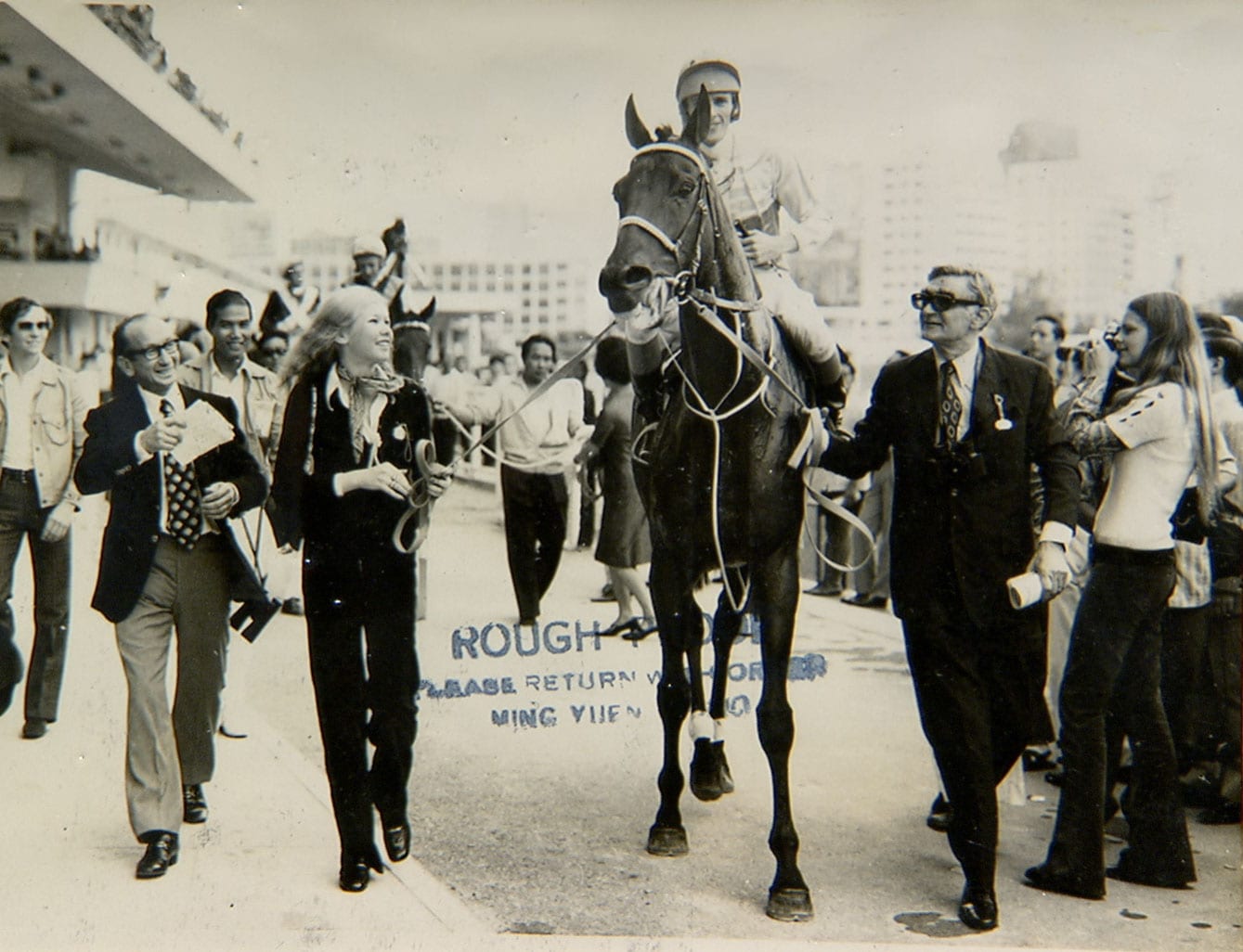
World view pays off
Moore’s life and career reveal a knack for spotting an opportunity’s potential at an early stage, or tapping an emerging trend and capitalising. That was the case in the spring of 1971 when he arrived at Kai Tak airport via France and Singapore, and realised something possibly big was brewing in Hong Kong. His father knew the chief steward’s brother, helped him get a licence, and he rode the final months of the last amateur season, then stayed on as a professional.
“I lived on Kowloon-side in a little 200 square-foot room,” he recalls of those days when, every morning, he and fellow rider Geoff Lane would take a stomach-churning journey across Victoria Harbour in a walla-walla, a small water taxi.
“When the professional season was about to start, Geoff was one of those invited to ride: Gumbleton, ‘Flapper’ Yates, Bobby Elliott; a few of the amateurs kept going, the MacMillan brothers kept riding for a season or two after that.”
But his father was about to set up in Chantilly, France, training for big-hitting American owner Nelson Bunker-Hunt; Moore was flown to the United States for a meeting, the idea being he would be part of the set-up too, but his head – if not yet his heart – was already in Hong Kong. He turned down the offer and returned to Asia.
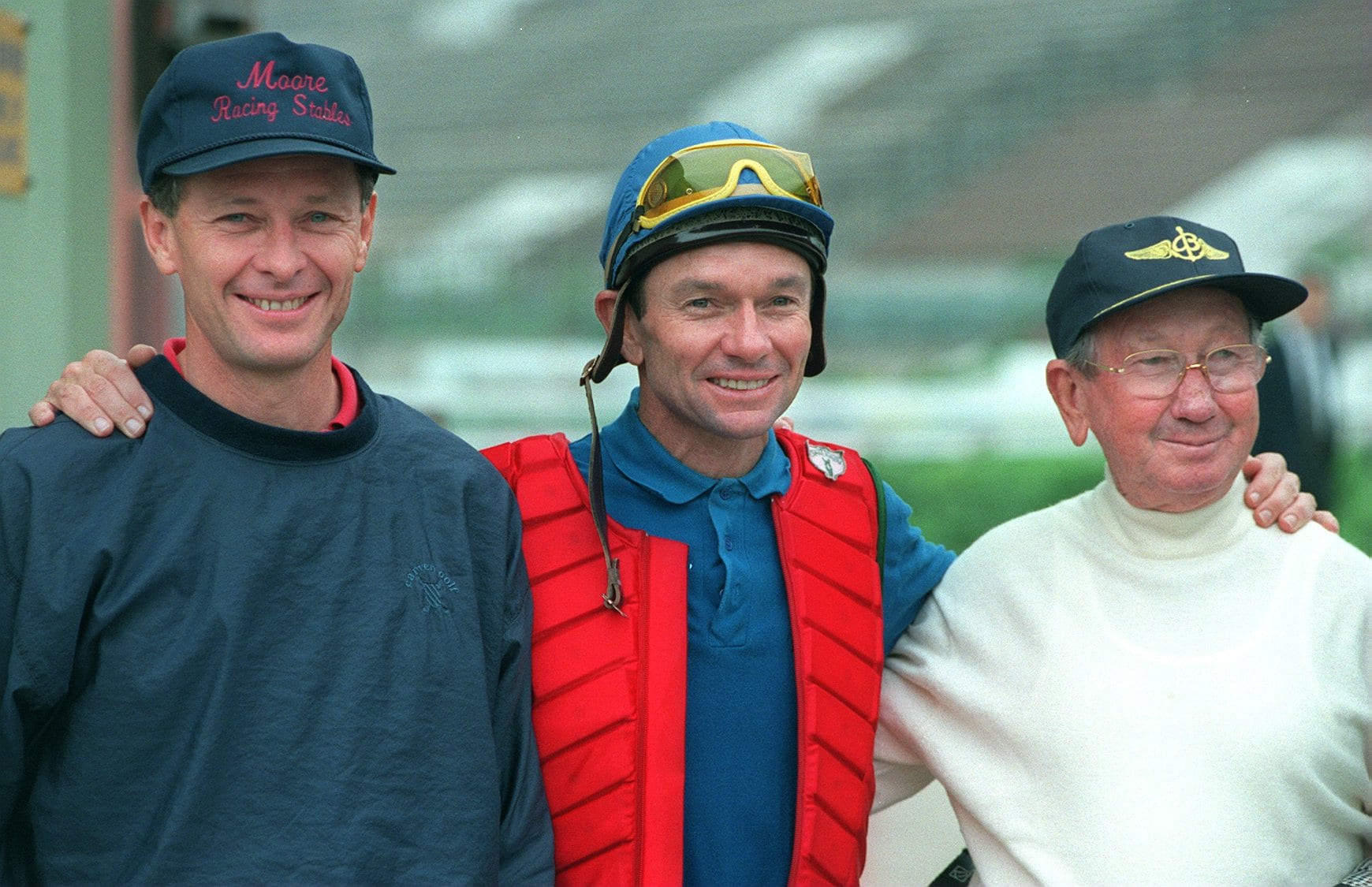
Gary flew in for a visit and by 1972 the Chantilly experiment was over, his father followed and the whole George Moore clan was in situ, together, in an apartment close to Happy Valley racecourse. The patriarch and great jockey-turned trainer gave the new pro racing scene the kudos it required, with youngest son riding as stable jockey – between carving out his own impressive collection of majors in Australia and Europe – and eldest as the back-up: “I was more dad’s lead work rider,” Moore says.
That didn’t stop him collecting 23 wins – the first being Connetable – from 304 rides as a jockey between March 1971 and the 1976/77 season. In the first season of the professional era, Hong Kong staged only 258 races, rising to 411 in Moore’s final season as a rider.
By 1985 he had gained experience observing and working with some of the world’s best trainers – Kevin Prendergast in Ireland, Colin Hayes in Australia and Charlie Whittingham in the United States.
“The feeding in America, it was amazing; I turned everything around for dad with nutrition, that was the key, turning around from the old oats, maize, barley, wheat. What Charlie Whittingham was feeding on top of the grain was amazing. And, you know what, today I still have my little pad; I wrote everything down, the way he fed, the times he fed, leading into races – I noted everything in that notepad and kept it,” he says.
When George, Hong Kong’s dominant trainer with 11 championships on the board, decided that year to retire after heart bypass surgery, Moore stepped in.
“I was leading trainer in my first season but that’s because of what dad left me. I think I would have had to have been pretty bad not to be,” he says of that first campaign, which yielded 48 wins from a 482-race season.
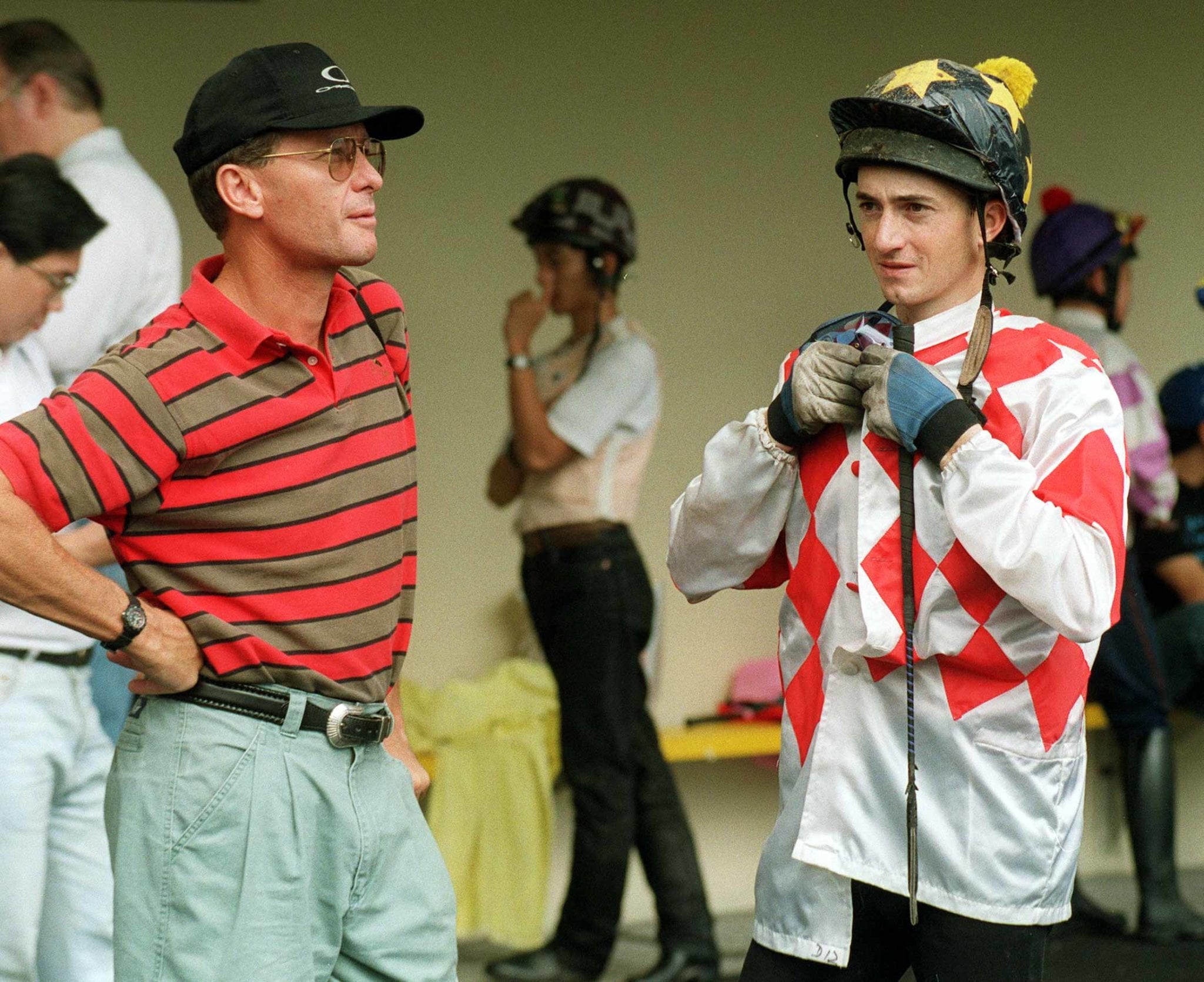
“I had so much to learn, even though I’d spent time with some of the world’s greats. I needed time. It took me a long time to come to grips with being a confident trainer; it was trial and error, until I learned how to kick a horse’s programme off. I needed to learn management and the ability to go to yearling sales and also buy tried horses worldwide. I learned nothing about yearlings from 1971 until the early ‘80s, that’s one thing I was missing.”
He turned to bloodstock agent John Foote, a connection through jockey Brent Thompson from his time spent at Lindsay Park with Hayes. Foote helped Moore’s Australian sourcing and the combination brought the handler a Stewards’ Cup winner in 1987, Distinction. Motivation came in from Argentina and won the 1993 Hong Kong Invitational Cup, now the Group 1 Hong Kong Cup, and in the later 1990s they spread their net to the United States.
“I bought John Size’s number one miler at Keeneland,” he says. “People think Ricky Yiu bought Electronic Unicorn, it’s totally wrong, I picked the horse out with John Foote; I fell out with the owner and within three months of him entering the stable he had moved him to Ricky Yiu, and then he was Horse of the Year for John Size.”
Moore had seen rival champion trainer Brian Kan start to enjoy success with European imports and he spotted an opportunity to tap the same pool but with the intention to snare nicer types. Foote connected him to Luke Lillingston and from that came a successful association with Alastair Donald. The 21st century saw Moore’s stock improve as he purchased tried European horses of higher quality – and he did the leg-work, going to Europe, attending Ascot and Goodwood, flying over to Ireland.
“I remember one day we set off from Brighton, I think it was, and went all the way up to the north, to Scotland, to see a horse; we went everywhere,” Moore says, throwing his arm out to emphasise the distances he would travel.
From starting out, it took him almost 10 years to get his first real star, the New Zealand import and 1995 Hong Kong Derby hero, Makarpura Star; it was another 11 before his next champ won the same contest, Viva Pataca, a US$1 million buy for Stanley Ho, out of Sir Mark Prescott’s Newmarket yard. But, since 2006, it’s been ‘viva’ almost all the way.

“John’s willingness to go out on a limb and procure a good horse has been outstanding as far as Hong Kong racing is concerned,” observes rival champion Size. “He’s been an exceptional example of someone who can acquire a horse from overseas and win big races in Hong Kong with it, which is no mean feat. It’s difficult to get horses from Europe and Australia to make the adaption and go on and be Group 1 horses – he’s done that very successfully.”
With so few Group 1 races on the Hong Kong calendar before the turn-of-the-century, Moore’s first arrived 22 years into his training career, in 2007, when Able One and Viva Pataca won the Champions Mile and QEII Cup; remarkably, Moore saddled the same pair to win the same two races fully three years later.
Having found his stride, he didn’t falter. The Group 1 winners kept coming, mostly from his summer European scouting trips: Xtension, Dan Excel, Military Attack, Dominant and Designs On Rome. But success brought a cost, the rising price of those European horses to eye-watering levels. He spread his net wider again; he looked back to Australia for tried gallopers, and in came Werther, Rapper Dragon and Beauty Generation, while the southern hemisphere yearling sales yielded Able Friend and the unfulfilled brilliance of Aethero.
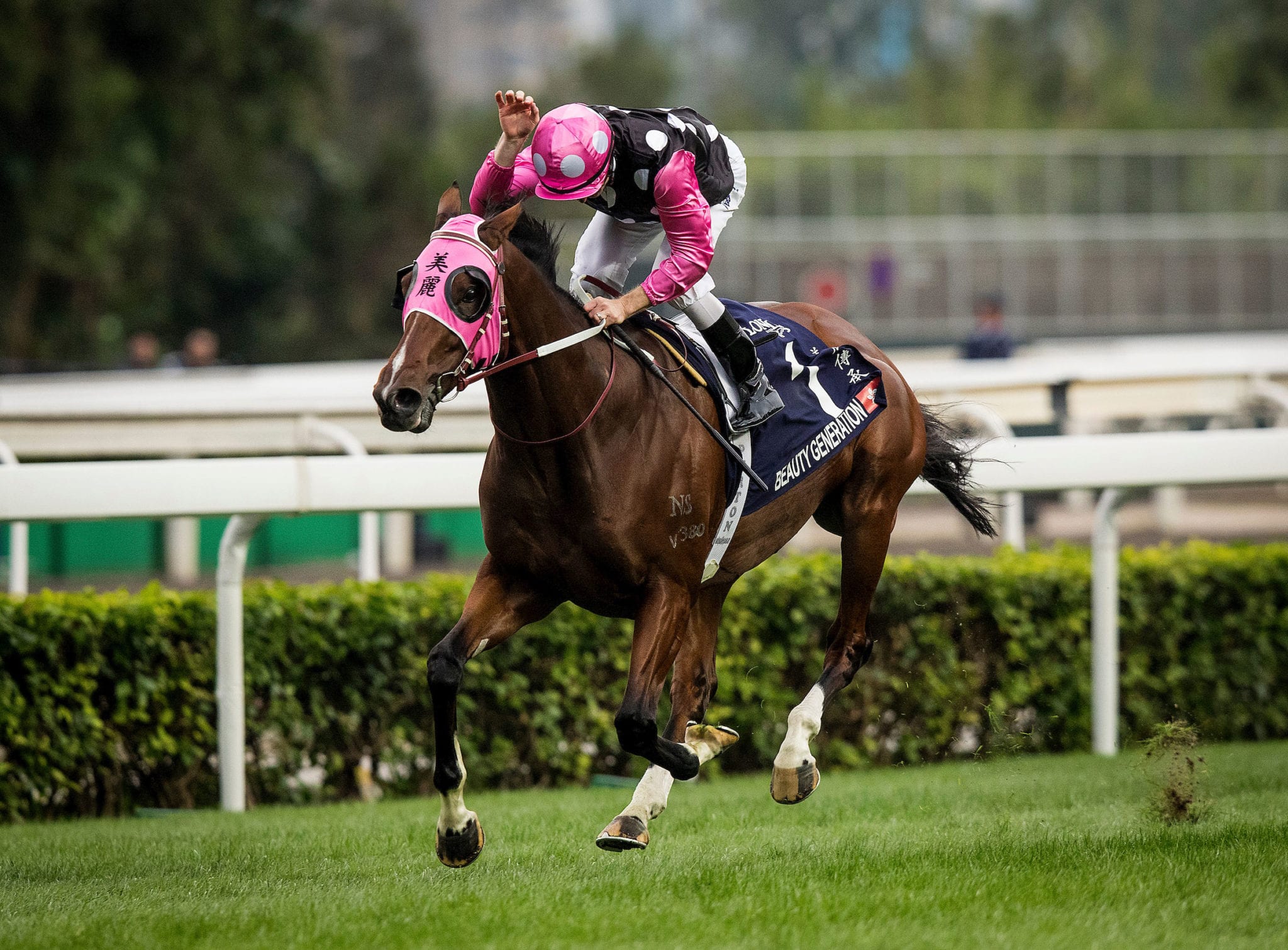
Champions and beyond
Ask Moore on most given days to recall his finest career moments and his response would be restrained, almost evasive, making plain that he lives more for the next big win than for dwelling on past glories. But in Able Friend and Beauty Generation he nurtured two horses of such outstanding ability that it would be nigh on impossible for any trainer not to reflect on their achievements somewhat wistfully.
Able Friend had a stunning burst of speed that belied his hulking chestnut frame. The Shamardal gelding vied for four-year-old honours with fellow Horse of the Year and stablemate Designs On Rome, and then dominated the Hong Kong mile scene for a season; he was even designated world champion sprinter after a sensational last-to-first win under a hefty top-weight in the Group 2 Premier Bowl Handicap (1200m).
“You can have favourites and you can have the best. Able Friend, we had him from day one, we bought him at the yearling sales and he went on to be world champion miler,” he says and leaves it there.
Moore and son George purchased Able Friend for AU$500,000 and the gelding took the stable to its highest peak. Incredibly, within three years, Moore matched that summit – some would argue surpassed it – with Beauty Generation, a New Zealand-bred bought privately out of Australia, where he was Group 1-placed as a three-year-old.
Beauty Generation evolved from Derby wannabe to juggernaut miler, an eight-time Group 1 winner, a two-time Horse of the Year, Hong Kong’s record stakes earner – topping Viva Pataca – and the first horse to break the HK$100 million earnings barrier. At his peak, he was invincible, and Moore made him so.
“Beauty Generation, I had to work out what I was doing with him,” he says. “Was I going to concentrate on what was not only his physique but also what was offered on the programme? He came here as a horse who could go 2000 metres, he holds the 2200-metre track record here at Sha Tin. But the change was two-fold: to my eye, he looked like a sprinter-miler, and then there was the fact that we have so many mile and 1400-metre races on the programme, that was a big factor.”
Moore’s skill at bringing in a horse from overseas and being able to acclimatise it, and school it in the tough Hong Kong environment, has been a hallmark of his career. Able Friend’s old partner Moreira, notes that “he brings them over and then is able to rise them and get them to perform at their very best,” and that is no easy feat. Plenty of big-reputation imports have flopped, and Moore himself has had his share of failures, but no other trainer has succeeded in producing champions in Hong Kong like he has.
“People ask how do I peak a horse? As far as I’m concerned, it’s knowing the horse, really understanding that individual. It’s not training stereo style,” he says.
“It’s all individual, I treat every horse so differently because I just love the animal so much. If I trained a few hundred horses, I’d feel guilty, I’d be missing something. With 70 horses in Hong Kong, I can know the horses. With more than 100, I’d miss something, like Thanks Forever, he looked like the worst of the lot, with his terrible action, but you get to understand the horse and nurture him and accept him for what he is, and then he’s placing in Group 1 races.”
Moore will take that method forward, for his Hong Kong departure is also an Australian return. He has unfinished business and he believes he has time still to complete, with a small string of about 20 or so horses and the backing of owners like the Kwok family, Bon Ho, Matthew Wong and Arrowfield Stud. He will take his stopwatch and his binoculars, and five decades of experience, and he will try to get the remaining bucket list item he most desires.
“I want that Group 1 win in Australia. I got one as an owner with Eagle Way – Bryan Guy trained him – but I want a Group 1 there as a trainer,” he says, his eyes narrowing.
Australia is his future. When the lights go out at Happy Valley on Wednesday, 15 July, for the first time since 1971, John Moore will not be a licensed participant on the Hong Kong racing circuit. That time is up.